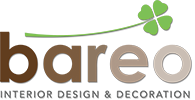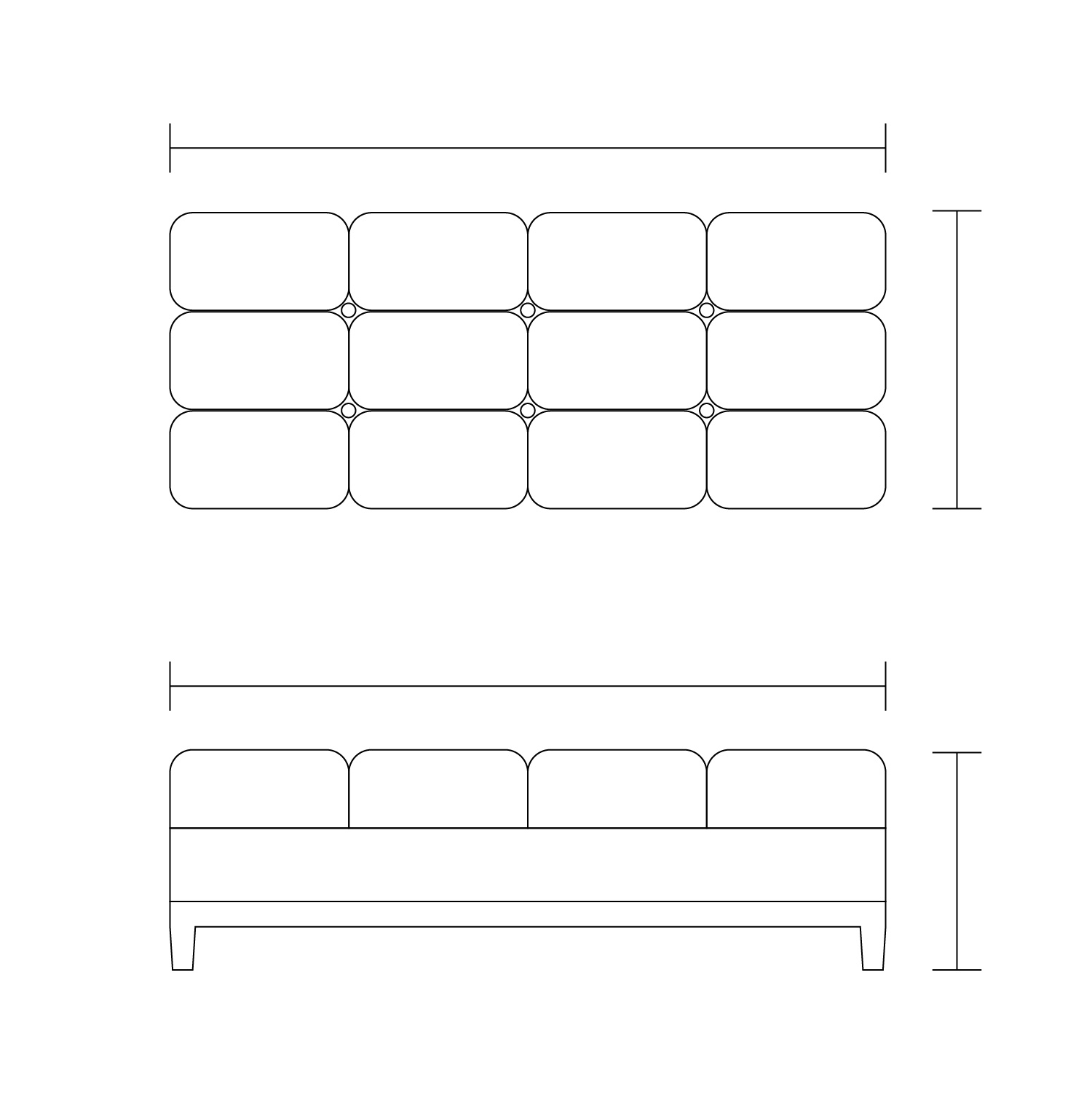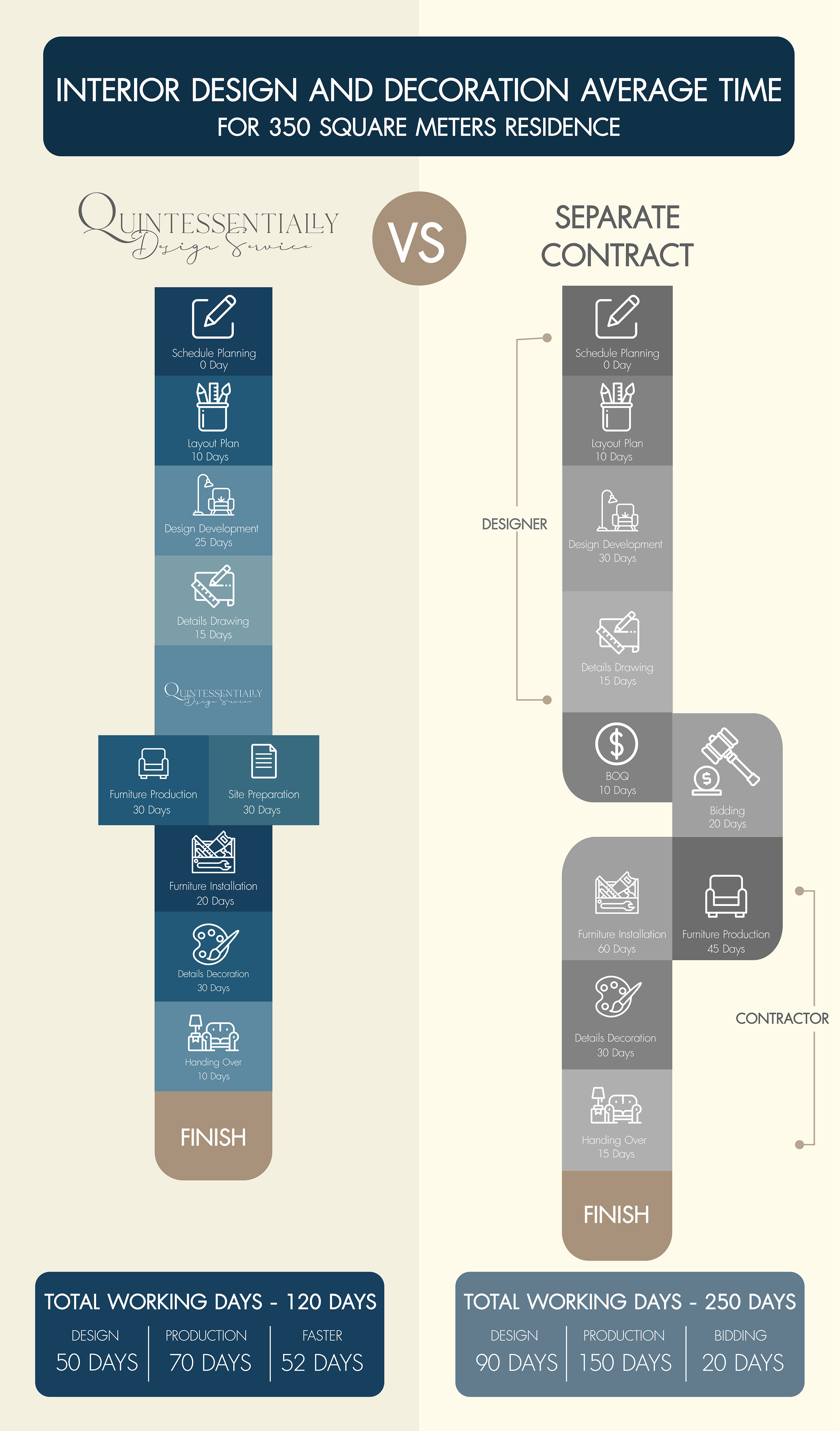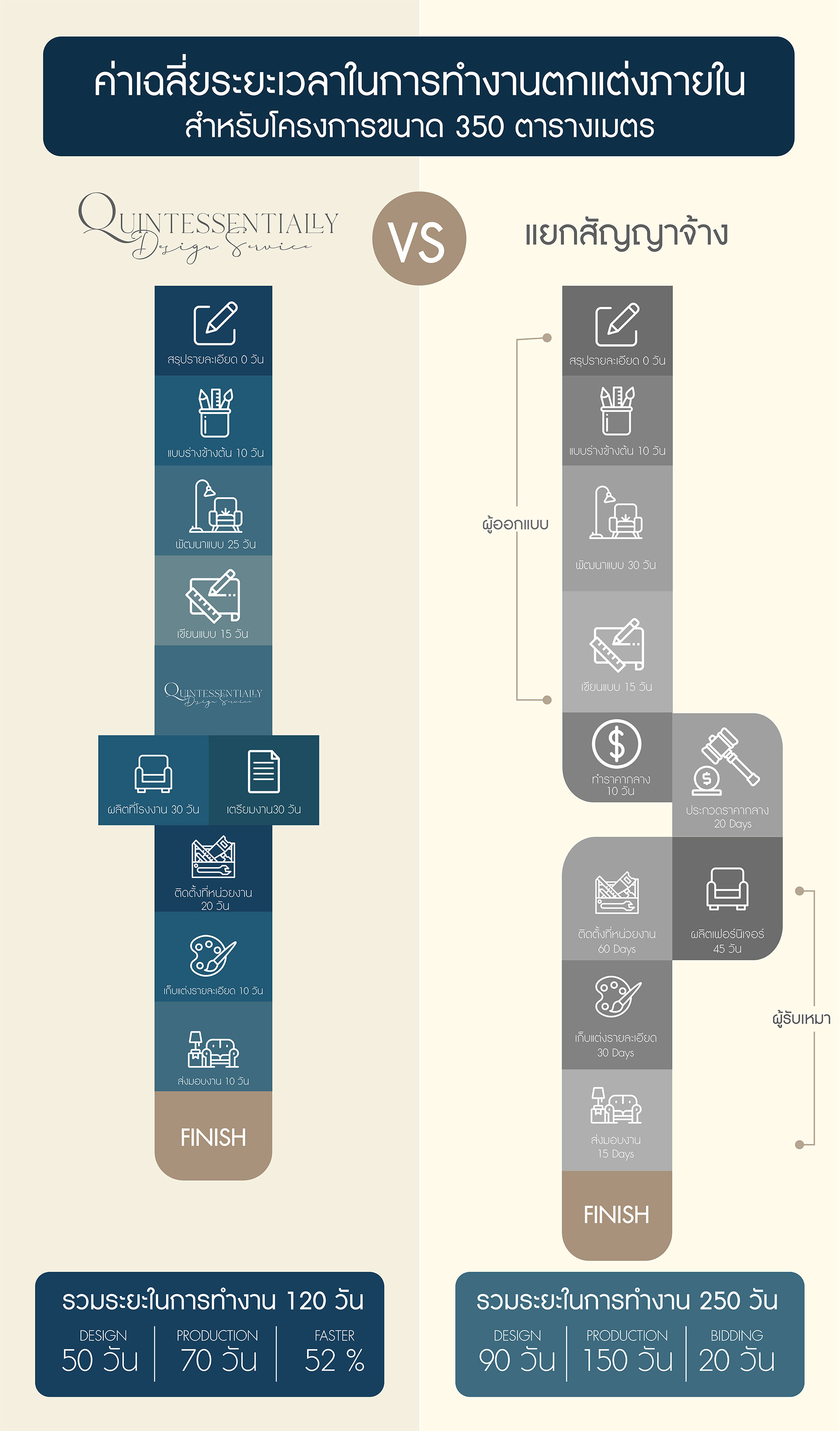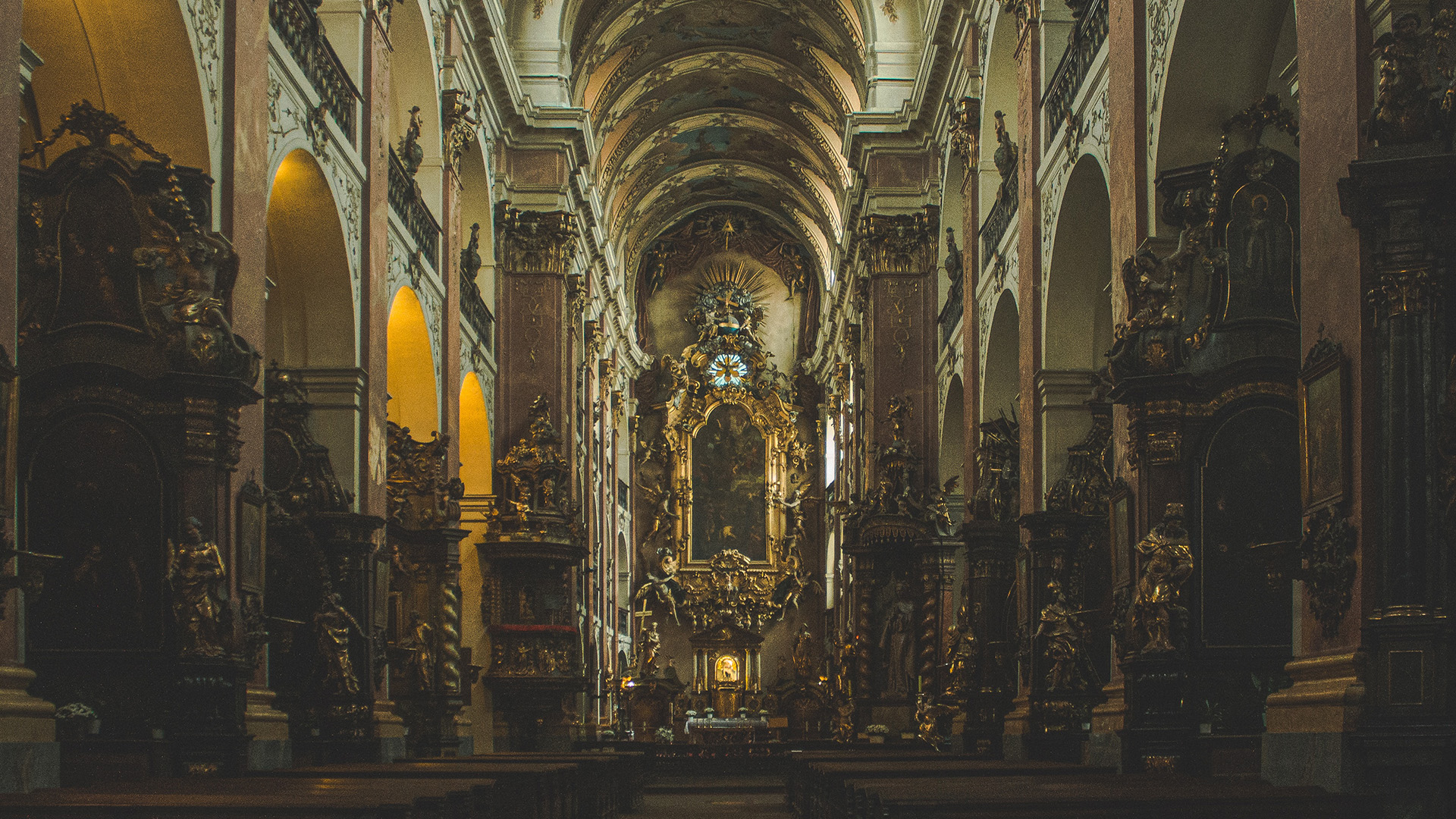
Rococo : Style & Decor
| EN | TH |
Origins and History of Rococo
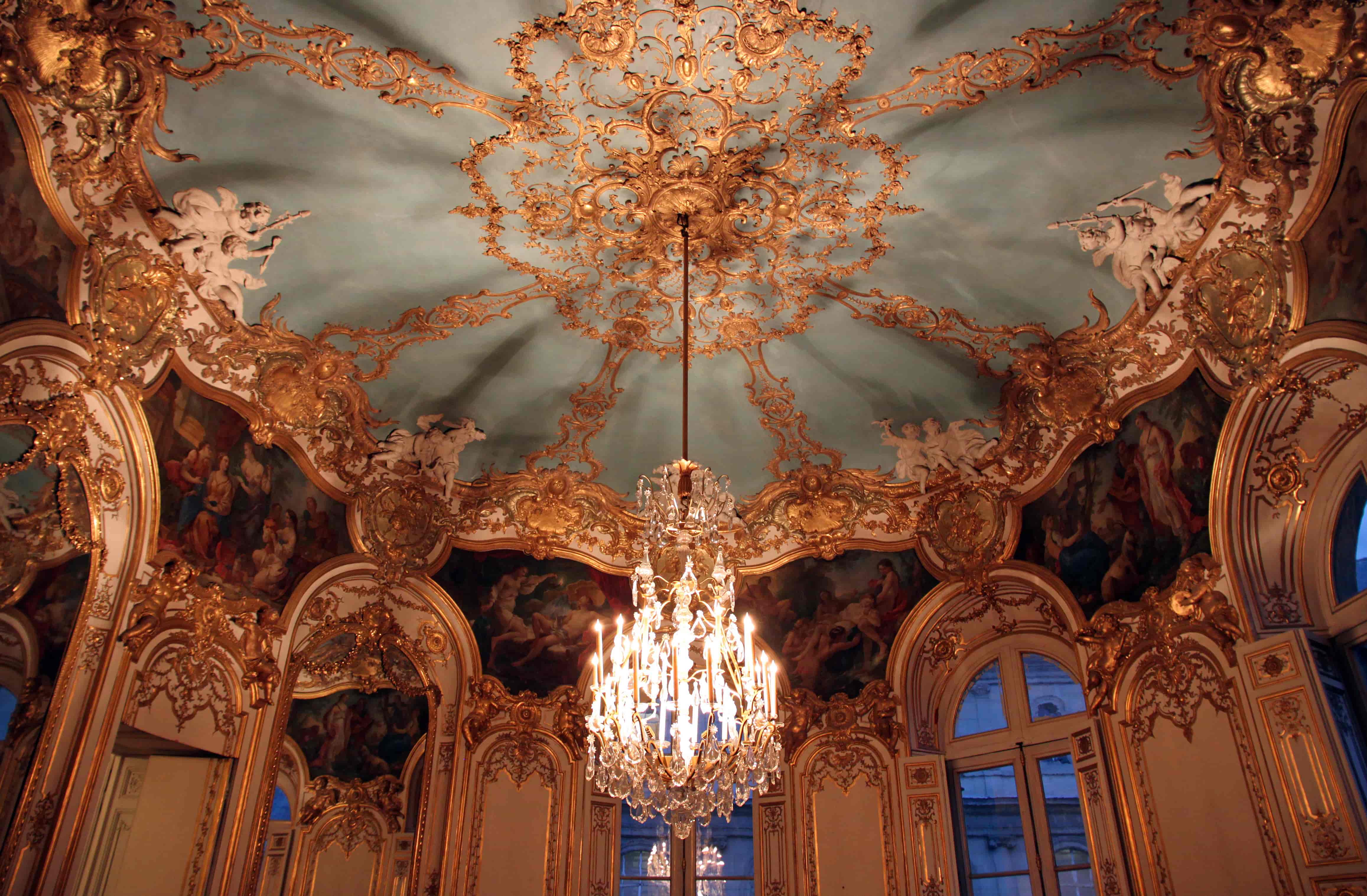
Credit : Wikipedia
The Rococo style, also known as Late Baroque, developed in France in the early 1700s. The term Rococo comes from the French word “rocaille” which means decorative rock or shell work. This style is evident in architecture, decorative arts and fine arts from the time.
Rococo style is associated with the reign of King Louis XV and is a lighter rendition of the Baroque style. While Baroque had more drama and heavy emotion, Rococo is equally decorative but in a more lighthearted manner.
The rococo style represented secular high fashion while Baroque was focused on displaying the power of the church. It retains the intense and extremely decorative style for Baroque but is more fluid and elaborate.
Initially, Rococo developed in interiors and the decorative arts but soon it spread to architecture. It was a secular style used for the interiors of private residences but had a spiritual aspect that led to its use in church interiors as well, especially in Portugal and central Europe.
This style was employed particularly for designing special rooms like salons which were meant for entertaining guests and holding gatherings. French aristocrats favoured this style and it was soon popular amongst most of the aristocratic class that wanted to demonstrate that they were fashionable. In the 18th century, it became popular across Europe, particularly in Poland, Germany and Russia.
Rococo interior design style
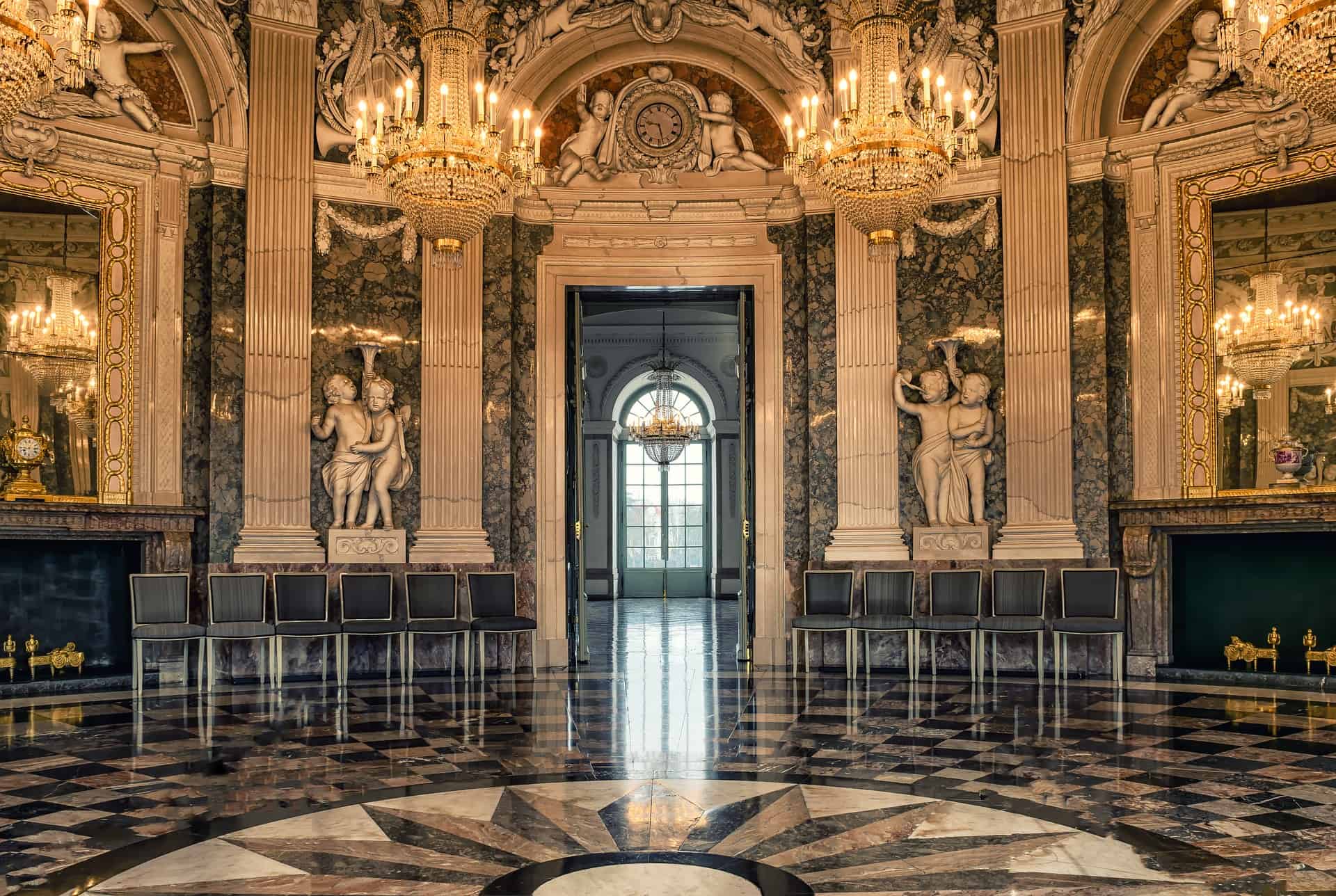
Credit : Peter H on Pixabay
For those who love the style of the 17th and 18th century, the Rococo style is a favourite for interiors. The aesthetic of this style can be achieved quite easily but it requires attention to detail and elaborate work.
This is why it is better suited for homes with a high budget for the interior and decoration. Everything about Rococo is unavoidably opulent although it is toned down as compared to the Baroque style.
Adding Rococo style to your home:
Pastel colour palette
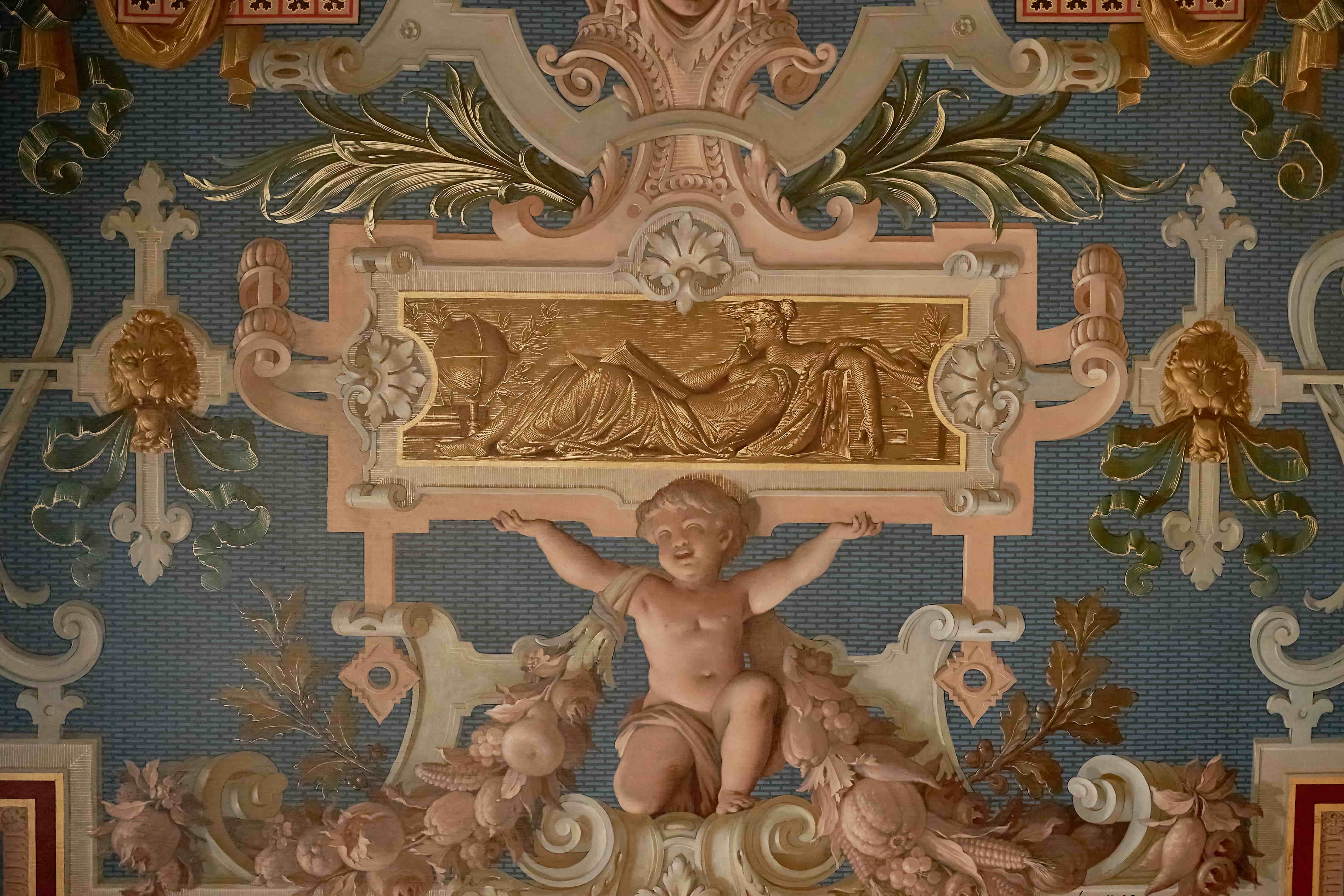
Credit : cottonbro from Pexels
The use of light pastel colours is an important factor and these are paired with gold, silver, polished marble and ivory whites. The colours and materials used in Rococo rooms have to be opulent but visually light. This colour palette is followed in everything from the walls and ceilings to the paintings and furniture.
Curved lines and Asymmetrical values
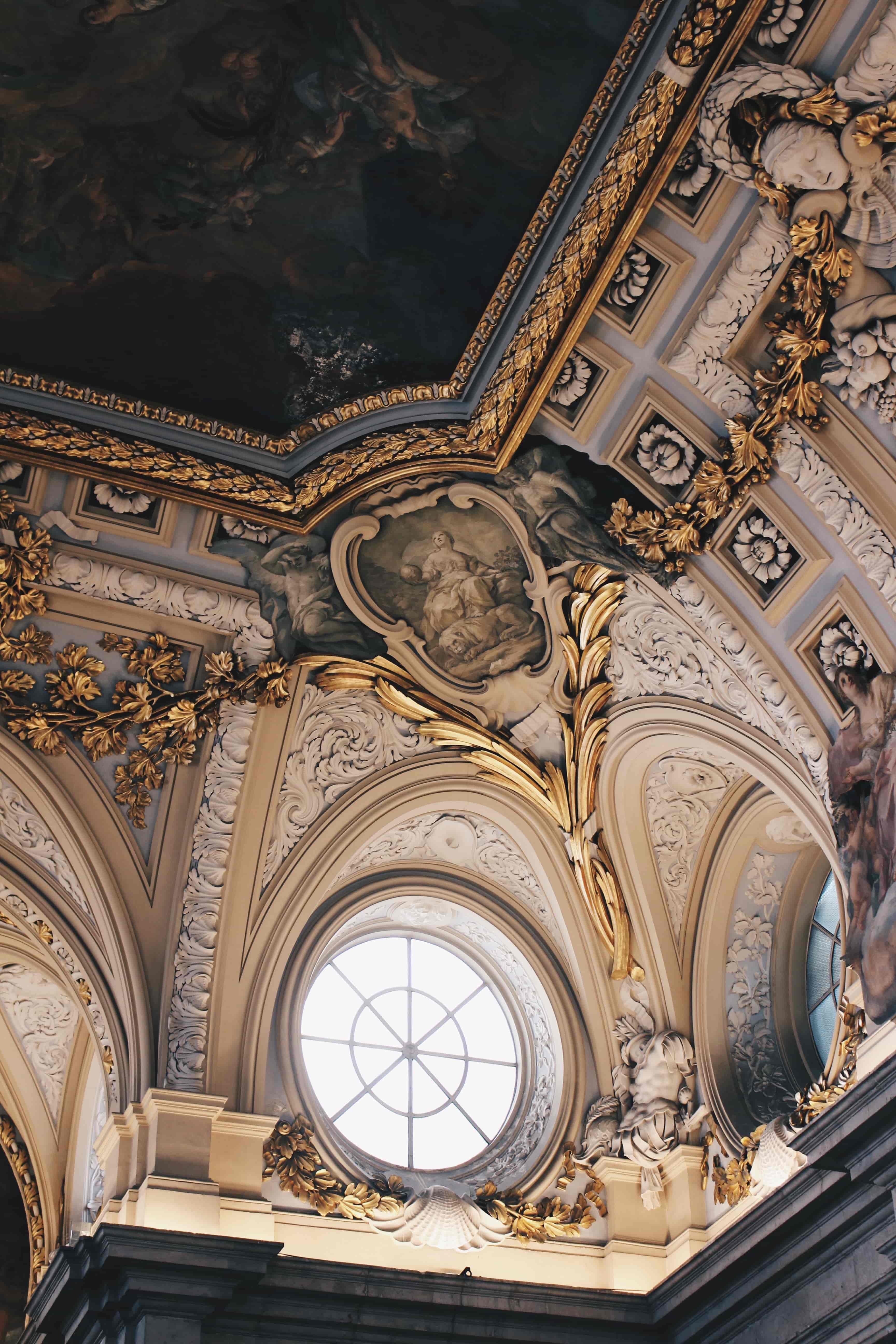
Credit : Simi Iluyomade on Unsplash
You can forget about symmetry and focus more on sweeping forms and scrolls. Smooth lines and rounded forms are features of Rococo style. Nothing should be rectangular and everything from the back of a chair to a tabletop should be rounded.
Elaborate ornamentation
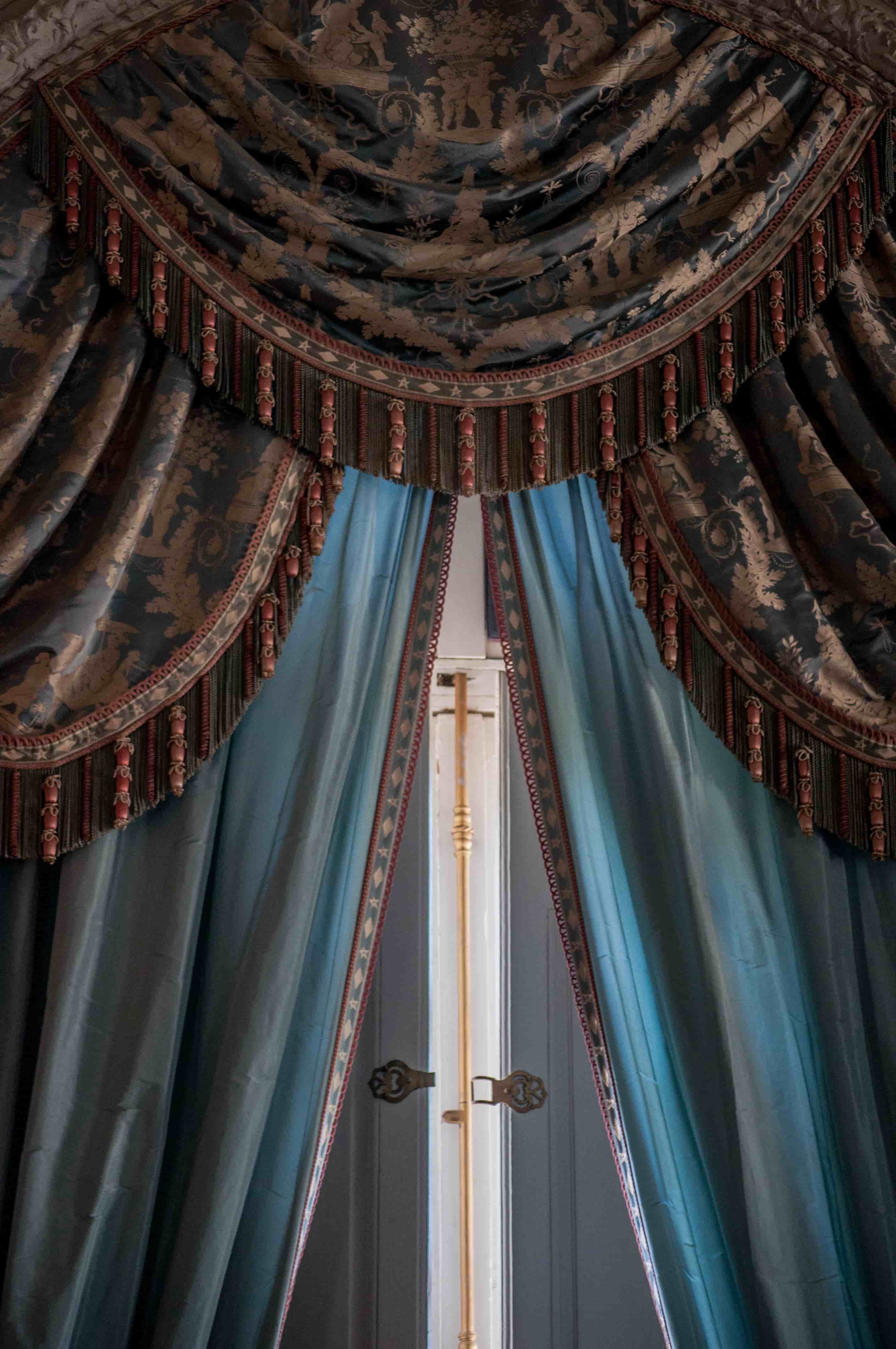
Credit : Sophie Louisnard on Unsplash
Elements of the Chinese style like a tapestry with an oriental landscape or a Chinese fan can be used since oriental luxury influenced Rococo style. Figures or images of mythological or erotic subjects can be added. Think along the lines of cupids, nymphs and ancient gods. Mirrors or paintings in gilded frames or antique clocks can also be used. Patterned carpets and heavy drapes will look organic in a Rococo room.
Luxurious materials
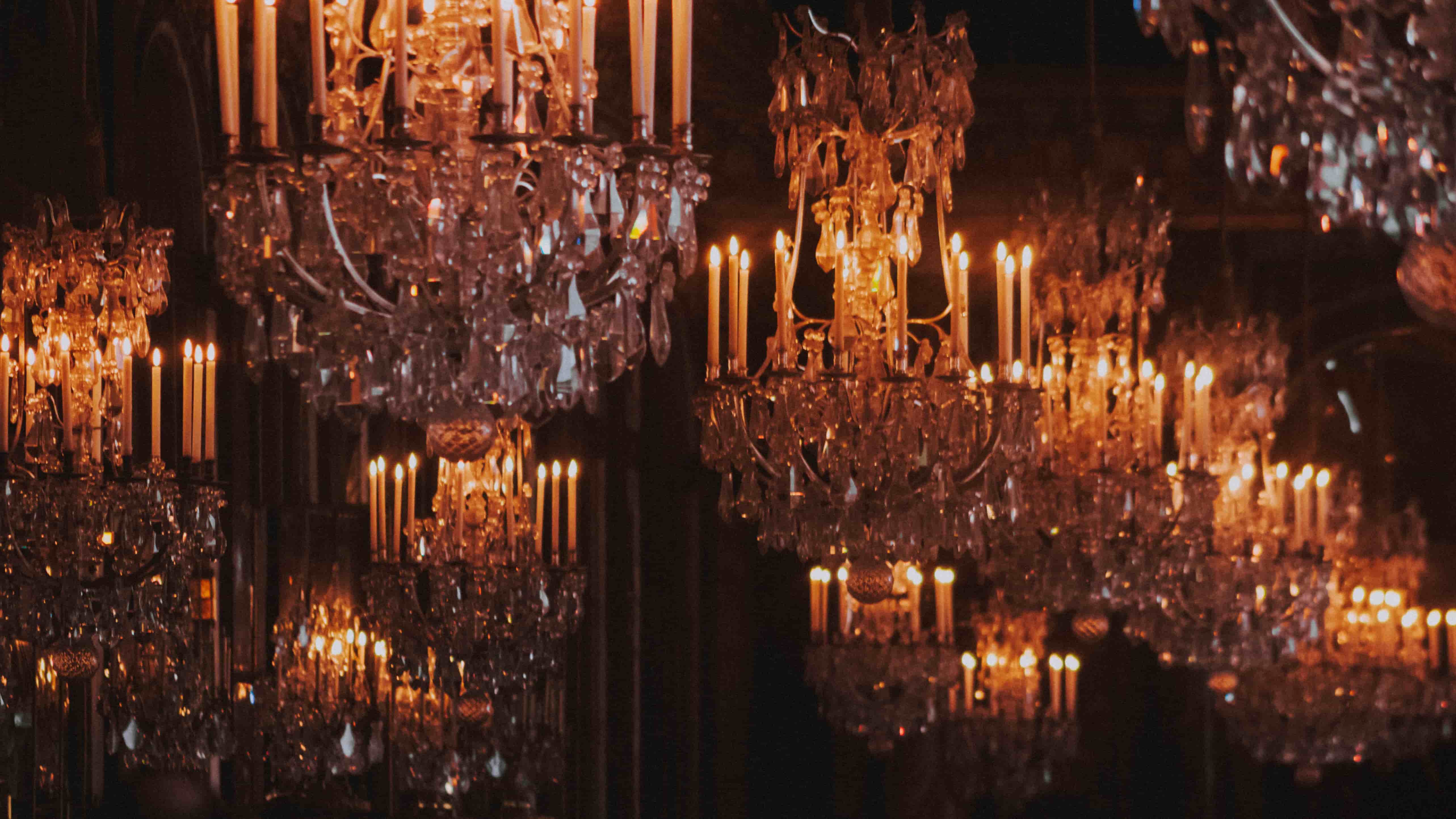
Credit : Mathias P.R. Reding on Unsplash
Fabrics adding a touch of elegance like silk, satin or velvet can be used for bedding, upholstery, etc. Refined fabrics with embroidery add an expensive look. Crystal lamps, figurines or vases add Rococo touches to the room. A crystal chandelier which imitates candelabra with candles would fit right in. Natural wood and forged metal elements are also used in Rococo style.
Comfortable but luxurious furniture
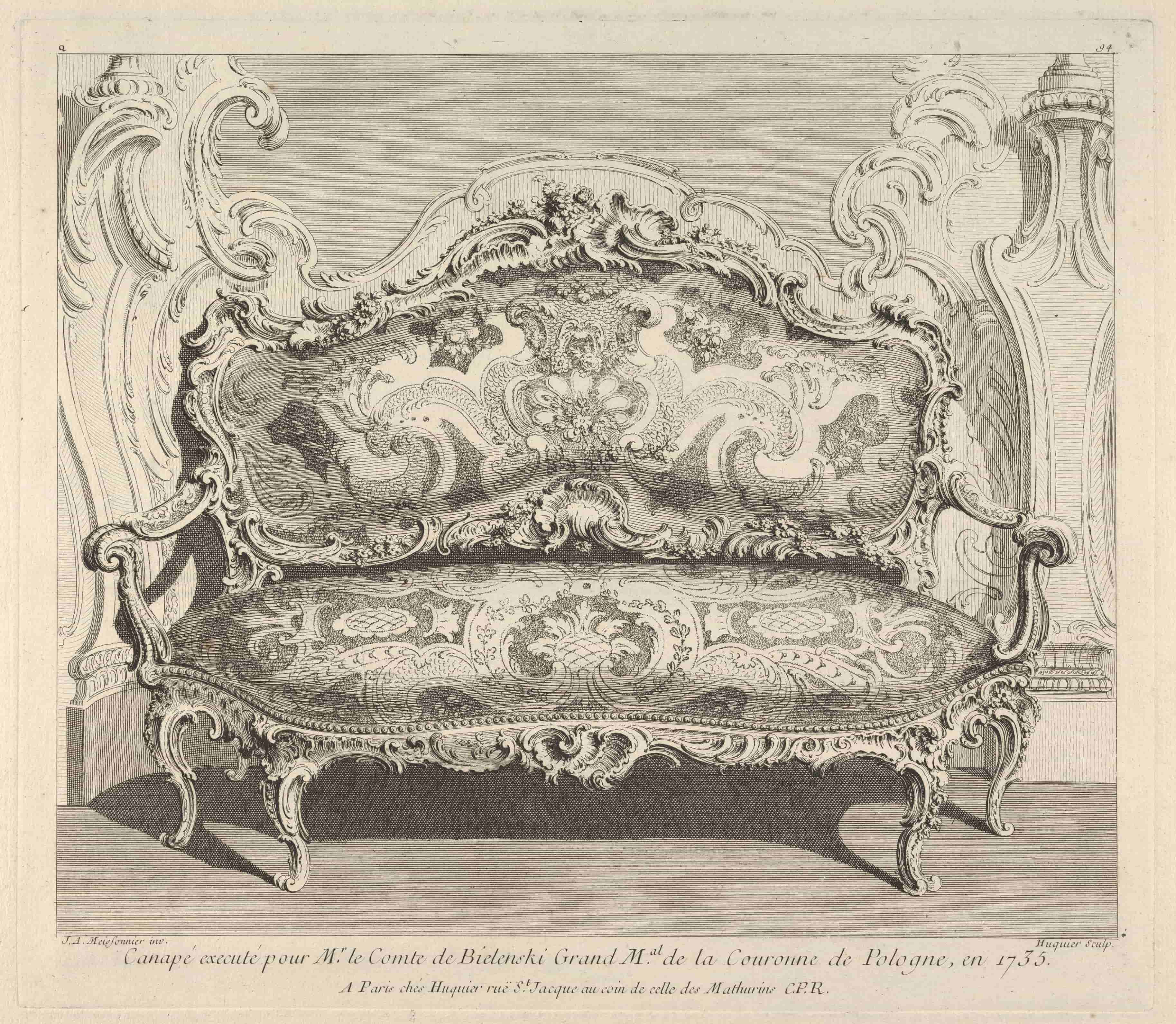
Credit : metmuseum .org
A massive fireplace in the living room with shelves. Elegant desks and benches or decorative tables. Soft armchairs, sofa or couch in rich materials. Chairs, tables or sofas with carved and rounded legs. If you take a look at the furniture designed by Juste-Aurele Meissonnier (1695-1750), you get an idea of exactly what Rococo furniture looked like in that era. His extravagant and decorative furniture were characteristic of Rococo style.
Examples of Rococo style:
The Swing
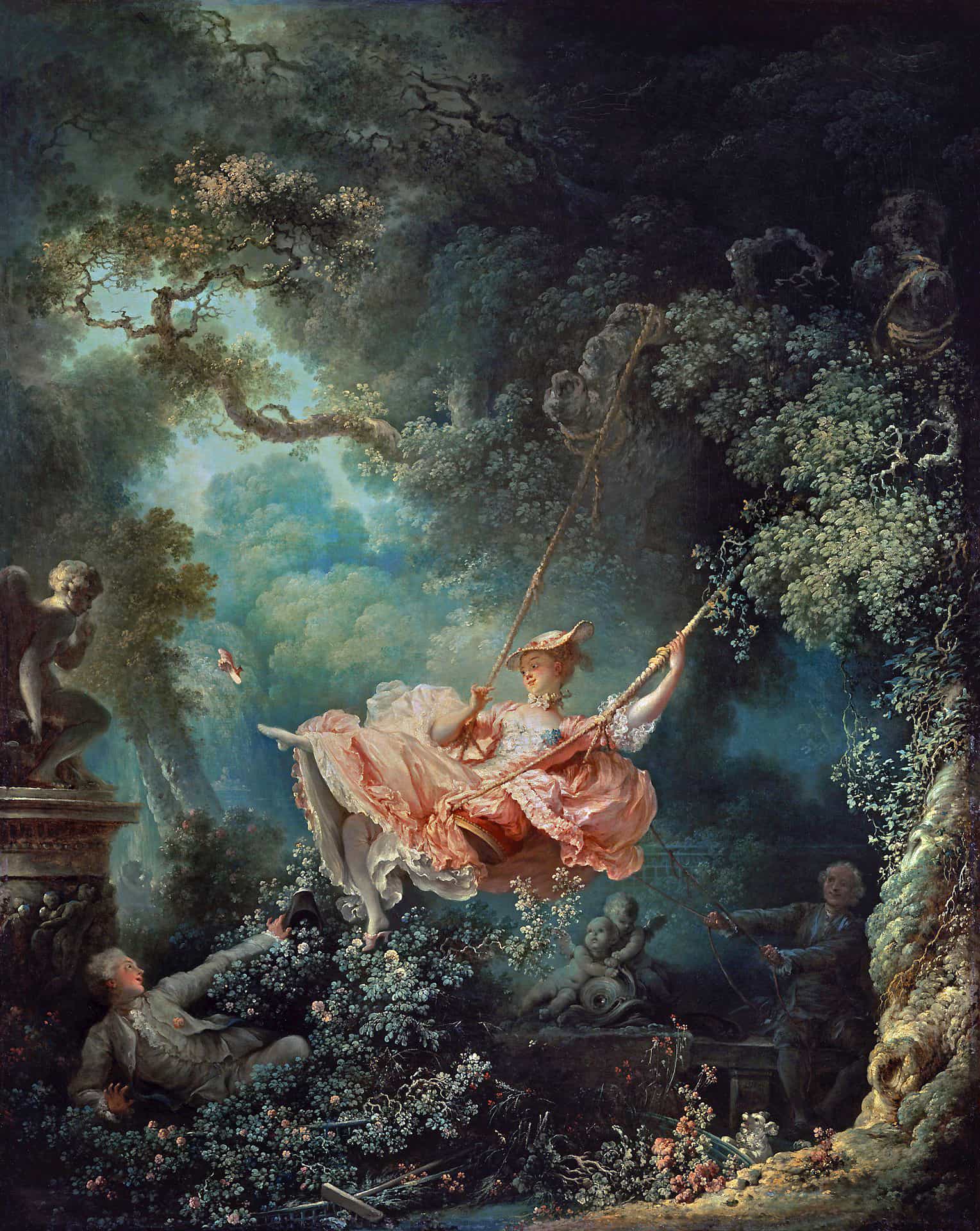
Credit : khanacademy .org
Jean-Honoré Fragonard’s ‘The Swing’ is a Rococo style painting that remains unmatched in frivolity and its over the top romance. It was commissioned by Baron Louis-Guillaume Baillet de Saint-Julien who wanted a painting of him looking up the skirt of his mistress. The painting depicts a young woman wearing a ruffled dress in ballet pink that floats in a clearing which is dramatically lit while she rocks on a crimson cushioned swing. Her shoe is flung towards a cupid sculpture while she is gazing at a man sprawled on the ground in the bushes below her.
The suited man gazes up at her with a love-struck grin on his face. Behind her, an older man stands in the shadows while pulling the reins of the swings. The obsessive detail and hedonistic subject of the painting mark it as an icon of the Rococo style. This 1767 painting remains a source of visual enjoyment and creative inspiration.
The Love Letter, François Boucher
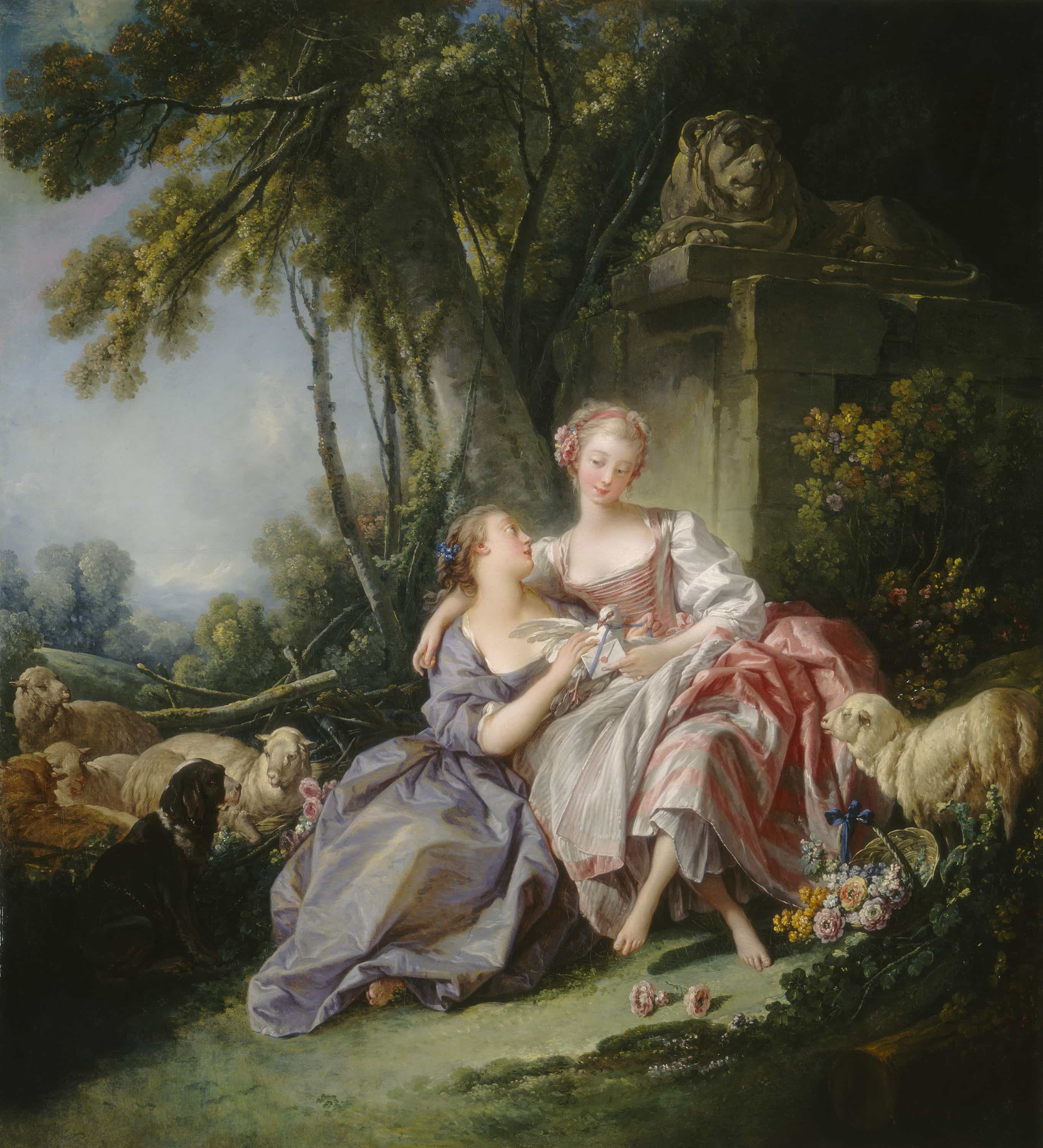
Credit : Wikimedia.org
The Love Letter (1750) is an oil on canvas painting by Francois Boucher which is another exemplary example of Rococo style. This painting is also known by other names; The Two Confidantes, The Lovers’ Secret Mail and The Messenger.
It depicts two young women reclining in a lush garden or maybe a wooded countryside. A stone pillar with a carved lion is right behind them. One of the women is looking up at her companion with admiration as she ties an envelope with a blue ribbon around a pigeon’s neck. The sheep and the dog near them imply that they are shepherdesses.
However, like other characters from Boucher, these women pay no heed to their responsibilities and would rather spend their day idling away while gathering flowers and sending missives. The artist enhances the visual experience with his exquisite brushwork and subtle play with lights and darks. Jean Honoré Fragonard was one of Boucher’s greatest pupils and employed his strategy in his artworks later.
Château de Versailles
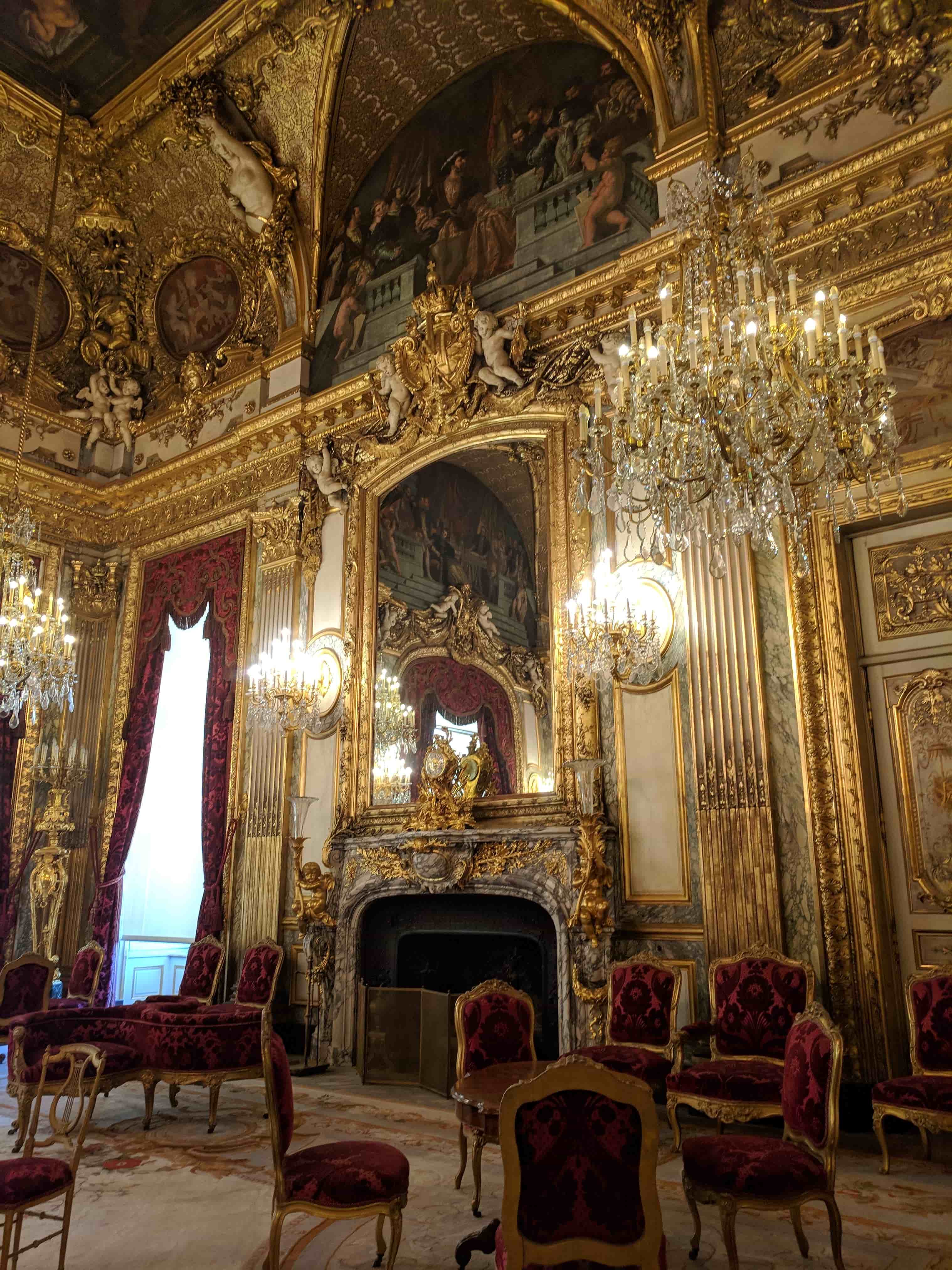
Credit : Sigmund on Unsplash
Chateau de Versailles or The Palace of Versailles is an architectural example of the Rococo style. This opulent palace was built by Louis XIV and has 700 rooms and extensive gardens. The architect Louis Le Vau, interior decorator Charles Le Brun and landscape designer Andre Le Notre worked to execute the structure in a grand French Baroque style. This is evident in the large curved forms, high domes, complicated shapes and twisted columns of the palace.
There is heavy marbling, heavily gilded plaster moulding, red and gold upholstery and sculpted sideboards all around. The Hall of Mirrors in the palace is one of the most famous rooms and visited by tourists from all over.
And there are 17 mirrored arches reflecting 17 arcaded windows which overlook the beautiful gardens of the palace. There are 21 mirrors in each arch and the arches were fixed between marble pilasters with bronze symbols of France embedded on them. The extravagant gardens of the Palace of Versailles were also inspired by Rococo style with the parterres of flowers, sculptures, fountains and manicured lawns.
Solitude Palace
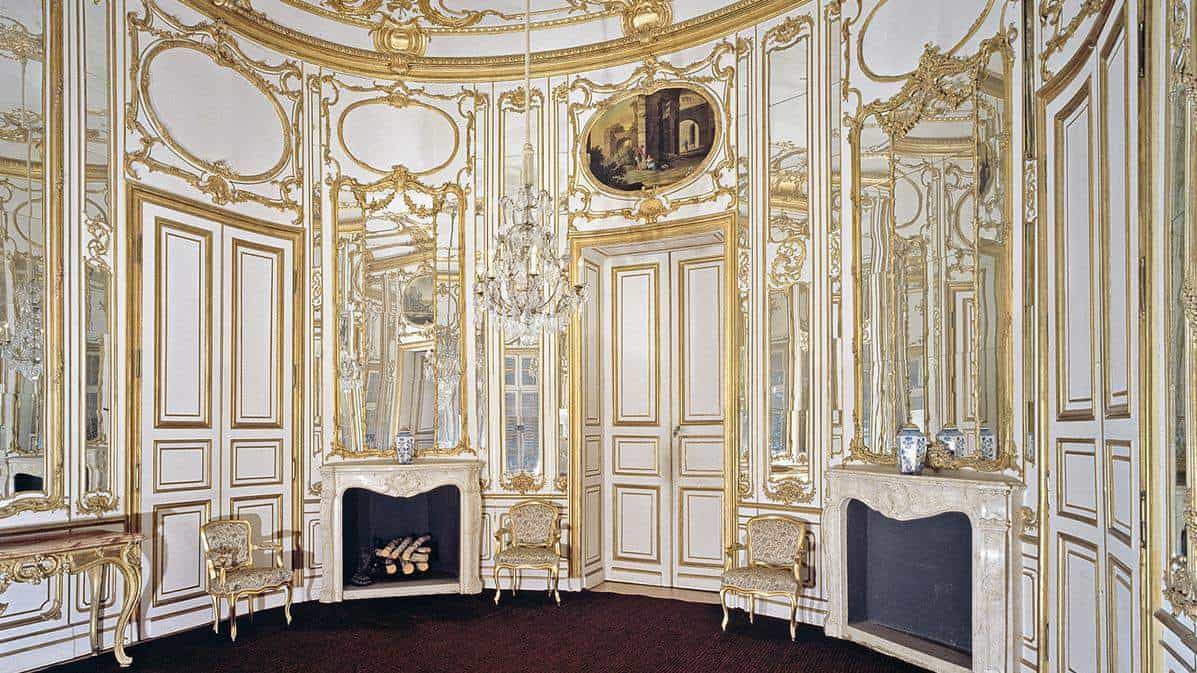
Credit : schloss-solitude .de
Solitude Palace is a beautifully well-preserved palace that has managed to survive the centuries while remaining amazingly unchanged. Commissioned by Duke Carl Eugen, it is a unique blend of Rococo and Classicism.
It has two stories, a surrounding terrace and a perron like other older pleasure buildings of the time. However, the rooms of the palace were comparatively quite modern as their decor reflects the transition from Rococo to Classicism. There is barely any flat surface in this structure that is undecorated. Rich ornamentation, flowers, figures and gilding is evident all over.
The lacquer tables with chinoiserie and pastel colours reflect the elements characteristic of the late Rococo period. The designs were started by French architect Philippe de La Geepiere and finished by Reinhard Ferdinand Heinrich Fischer. The pleasure ponds, hedge theatres and mazes in the strictly organized garden were all typical features of the Rococo style.
Catherine Palace / Tsarskoye Selo
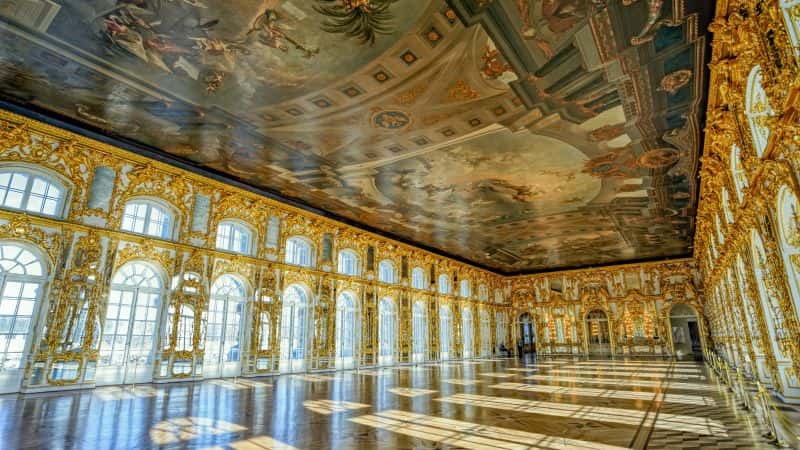
Credit : tsarvoyages .com
The Catherine Palace in St. Petersburg, Russia is one of the largest Rococo palaces in the world. It was the summer residence of Russian tsars and is about 25 kilometres from the city in Pushkin. Initially commissioned in 1717 by Catherine I, the architect in charge of the design was Johann-Friedrich Braunstein. Empress Anna expanded it in 1743 and wanted grander renovations. The new structure in Rococo style was designed by Bartolomeo Rastrelli, her court architect.
It took four years to build the palace and it was completed in 1756. Catherine the Great later changed the facade of the palace too. The palace is a grand example of Baroque style and is famous for the lavish exterior. The stucco facade was complicated and clad in more than 100 kilograms of gold. The roof was adorned by statues and there are atlantes, pilasters and caryatids as decorative elements with a gold leaf covering the surfaces. The interiors of the palace were done in the Rococo style by Rastrelli. Marble cupids and ornate bannisters are showcased in the State Staircase.
